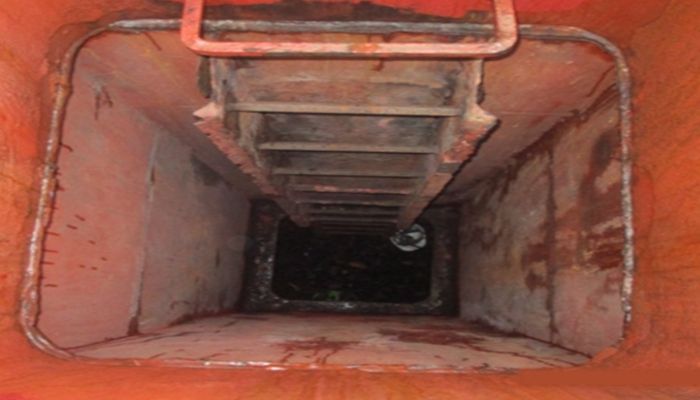

A bulk carrier loaded with coal was at berth and crew were preparing to discharge. The bosun, fitter, and deck cadet were to open all the cargo hold hatch covers. After the hatch cover for cargo hold 1 was opened, the fitter told the Bosun that he needed to enter the access way to hold 1 to retrieve an air nozzle which he had dropped while clearing the hatch coaming at the previous port.
The bosun and ditter opened the aft access hatch to cargo hold 1 but the bosun told the fitter to wait at least 20 minutes before entering. Some time later, the deck cadet walked by the cargo hold and looked into the open hatch. He saw the fitter lying motionless below on the coal close to the access ladder. He immediately notified the bosun using his portable radio. The bosun quickly arrived on scene and, without raising the alarm, went directly down the access ladder in an attempt to rescue the fitter. Shortly after entering the cargo hold, the bosun lost consciousness.


The Chief Officer heard the deck cadet’s radio transmission and went to the access hatch. He immediately recognised the need to carry out an enclosed space rescue. The alarm was raised and crewmembers assembled and donned breathing gear. The two victims were extricated; the Bosun regained consciousness after being brought on deck but the fitter was not breathing and had no pulse. Despite resuscitation efforts, the fitter was pronounced deceased at a local hospital.
Among other things, the investigation found that; the Company’s enclosed space entry procedures were not followed. In particular, the ship’s officers had not been notified of the need or intention to enter the hold. The first, failed, attempt to rescue the fitter without initiating the enclosed space rescue procedures was a grave error that not only delayed the recovery of the fitter but put the Bosun’s own life in danger.
There was a distinct lack of awareness on the part of certain crewmembers on the hazards of entering a cargo hold containing coal without first complying with the Company’s enclosed space entry procedures.
Some of the initiatives taken after the investigation:
Locking devices were fitted to the access hatches for all cargo holds and other enclosed spaces on board the vessel.
The Company’s SMS was updated to require permanent signs at the entrance to enclosed spaces warning of the risk of asphyxiation if entered without taking proper precautions.
A training initiative was implemented to increase awareness of the hazards of entering enclosed spaces without taking proper precautions.
Lessons learned
Reference: The Nautical Institute










We believe that knowledge is power, and we’re committed to empowering our readers with the information and resources they need to succeed in the merchant navy industry.
Whether you’re looking for advice on career planning, news and analysis, or just want to connect with other aspiring merchant navy applicants, The Marine Learners is the place to be.